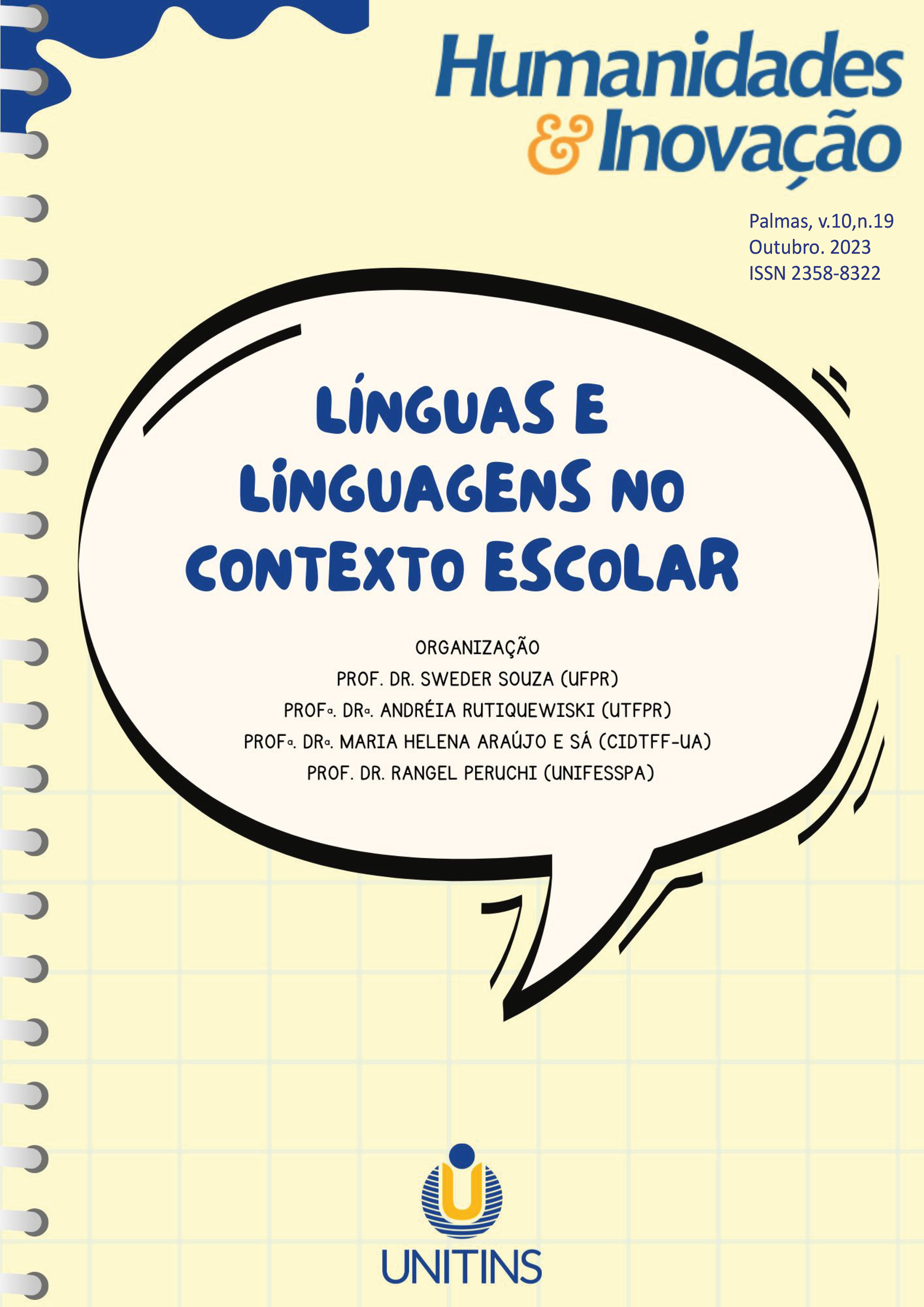THE ROLE OF PRAGMATICS IN TEACHING LANGUAGE
Resumen
Today, it is largely accepted that English has become a lingua franca in numerous contexts worldwide. In the last decades, the teaching of English has shifted from the teaching of the most prestigious varieties (British and American) to the teaching of English as a lingua franca (Jenkins, 2000). Such a shift requires an awareness of the role of pragmatics since the linguistic behavior of native speakers is not taken as a model to be followed. Yet, whether the pragmatic behavior of native speakers does not offer a reliable model to foreign speakers, in which model the teaching of English as a lingua franca has to lie? The first part of this article will present some of the main features of teaching English using the pragmatics of native speakers as a model. The second part will present teaching pragmatics by the use of pragmatic tools. Afterwards, the role of pragmatics in the teaching of English as a lingua franca will be discussed in order to understand how it works and in which ways the current view of teaching has changed. In the third part of this article, we will bring some light to the teaching of English. In summary, the shift in English language teaching towards English as a lingua franca underscores the importance of pragmatics in today's globalized world. The conventional approach of imitating native speakers' behaviors is no longer sufficient for effective communication in diverse contexts. While authentic models of speech remain valuable, they are just part of a broader toolkit.
Citas
BACHMAN, L. (1990). Fundamental considerations in language testing. Oxford: Oxford University Press.
BARDOVI-HARLIG, K. (2001). Evaluating the empirical evidence: Grounds for instruction in pragmatics. In Kasper, G., & Rose, K. (Eds.). Pragmatics and language teaching, (pp.11-32). Cambridge: Cambridge University Press.
BROWN, Penelope; LEVINSON, Stephen C. Politeness: Some universals in language usage. Cambridge university press, 1987.
CANAGARAJA, Suresh. (2014). In Search of a New Paradigm for Teaching English as an International Language. TESOL Journal. 5. 10.1002/tesj.166.
COGO, A. 2015. English as a Lingua Franca: Descriptions, Domains and Applications. In: BOWLES, H.; COGO, A. 2015. International perspectives on English as a lingua franca: pedagogical insights. London: Macmillan
FUKUYA, Y. J., REEVE, M., Gisi, J., & Christianson, M. (1998). Does focus on form work for teaching sociopragmatics? paper presented at the annual meeting of the international conference on pragmatics and language learning, University of Illinois at Urbana-Champaign, IL (1998) (ERIC Document Reproduction Service No. ED 452736).
GILMORE, A. (2007). Authentic materials and authenticity in foreign language learning. Language Teaching, 40(02), 97-118. doi:10.1017/S0261444807004144.
HOUSE,J. (2003).English as a lingua franca: A threat to multilingualism? https://doi.org/10.1111/j.1467-9841.2003.00242.x.
HOUSE, J. (2004). Unity in diversity: English as a lingua franca for Europe. Paper presented at the BAAL Conference2004, King’s College, London.
HOUSE,Juliane House (2009). Translation Oxford: Oxford University Press. 122 p.p.
JENKINS, J. (2000) The phonology of English as an international language: new models, new norms, new goals (Oxford Applied Linguistics), Oxford, GB. Oxford University Press, 266pp.
JORDÃO, C. M.. (2014). ILA - ILF - ILE - ILG: quem dá conta?. Revista Brasileira De Linguística Aplicada, 14(1), 13–40. https://doi.org/10.1590/S1984-63982014000100002.
KACHURU, B. (1985). Standards, codification and sociolinguistic realism: English language in the outer circle. In R. Quirk and H. Widowson (Eds.), English in the world: Teaching and learning the language and literatures (p. 11-36). Cambridge: Cambridge University Press.
KACHURU,, B. B. (1992). The second diaspora of English. In Machan, T.W. and C.T.Scott.
KASPER, G. (1997). Can pragmatic competence be taught? (NetWork #6) [HTML document]. Honolulu: University of Hawai'i, Second Language Teaching & Curriculum Center. Retrieved [today's date*] from the World Wide Web: http://www.nflrc.hawaii.edu/NetWorks/NW06/.
KASPER, G. and Rose, K.R. (2001) Pragmatics in Language Teaching. Cambridge University Press. http://dx.doi.org/10.1017/CBO9781139524797.003.
KASPER G. & Rose, K.R.. (2002). Pragmatic development in a second language. Language Learning. 52.
KECSKES, Istvan (2007): Formulaic language in English lingua franca. In: Istvan Kecskes/Laurence R. Horn (ed.): Explorations in Pragmatics: Linguistic, Cognitive and Intercultural Aspects. Berlin/New York, 191–219.
KECSKES, Istvan (2013): Intercultural Pragmatics. Oxford.
KECSKES, Istvan (2015): Intracultural communication and intercultural communication: Are they different? In: International Review of Pragmatics 7, 171–194.
MACKENZIE, J.L. and E. Martínez Caro, 2012. Compare and Contrast: A Grammar of English for Speakers of Spanish. Granada: Comares. Review by Beatriz Rodríguez Arrizabalaga in Revista Española de Lingüística Aplicada 27.1 (2014). 246-253.
MAURAREN, A. (2003). The corpus of English as lingua franca in academic settings. TESOL Quarterly, 37, 513– 527.Google Scholar.
MURRAY, G. (2014).Social Dimensions of Autonomy in Language Learning: London, UK: Palgrave Macmillan. 292 pp.
SEIDLHOFER, B. (2011). Understanding English as a lingua franca. Oxford: Oxford University Press.
SELINKER, L. (1972). Interlanguage. Product Information International Review of Applied Linguistics in Language Teaching, 10, 209-241.
SIFAKIS,Nicos C. (2019). ELF Awareness in English Language Teaching: Principles and Processes, Applied Linguistics, Volume 40, Issue 2, Pages 288–306, https://doi.org/10.1093/applin/amx034.
TIMMIS, I. (2002). Native-speaker norms and international English: A classroom view. ELT Journal 56.3, 240– 249.
WASHBURN, Gay N. Using Situation Comedies for Pragmatic Language Teaching and Learning. TESOL journal, 2001, 10.4, p. 21-26.
WIDDOWSON, H. G.(2013). "ELF and EFL: what's the difference? Comments on Michael Swan" Journal of English as a Lingua Franca, vol. 2, no. 1, pp. 187-193. https://doi.org/10.1515/jelf-2013-0009
A submissão de originais para este periódico implica na transferência, pelos autores, dos direitos de publicação impressa e digital. Os direitos autorais para os artigos publicados são do autor, com direitos do periódico sobre a primeira publicação. Os autores somente poderão utilizar os mesmos resultados em outras publicações indicando claramente este periódico como o meio da publicação original. Em virtude de sermos um periódico de acesso aberto, permite-se o uso gratuito dos artigos em aplicações educacionais, científicas, não comerciais, desde que citada a fonte (por favor, veja a Licença Creative Commons no rodapé desta página).











